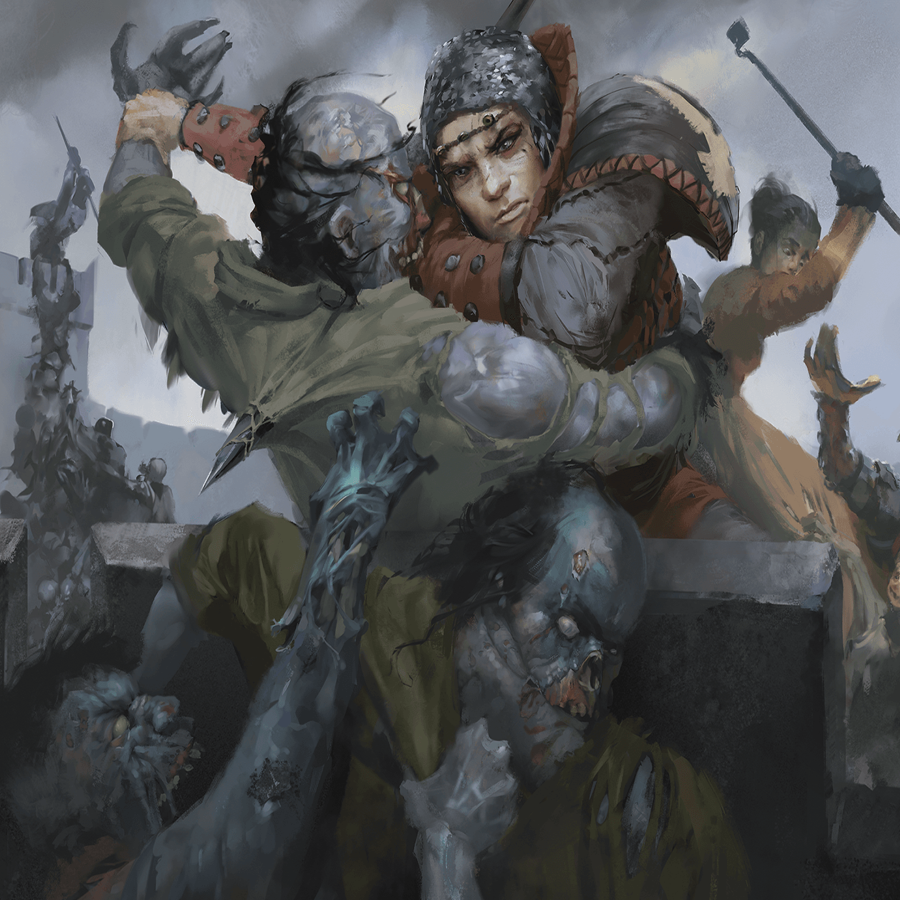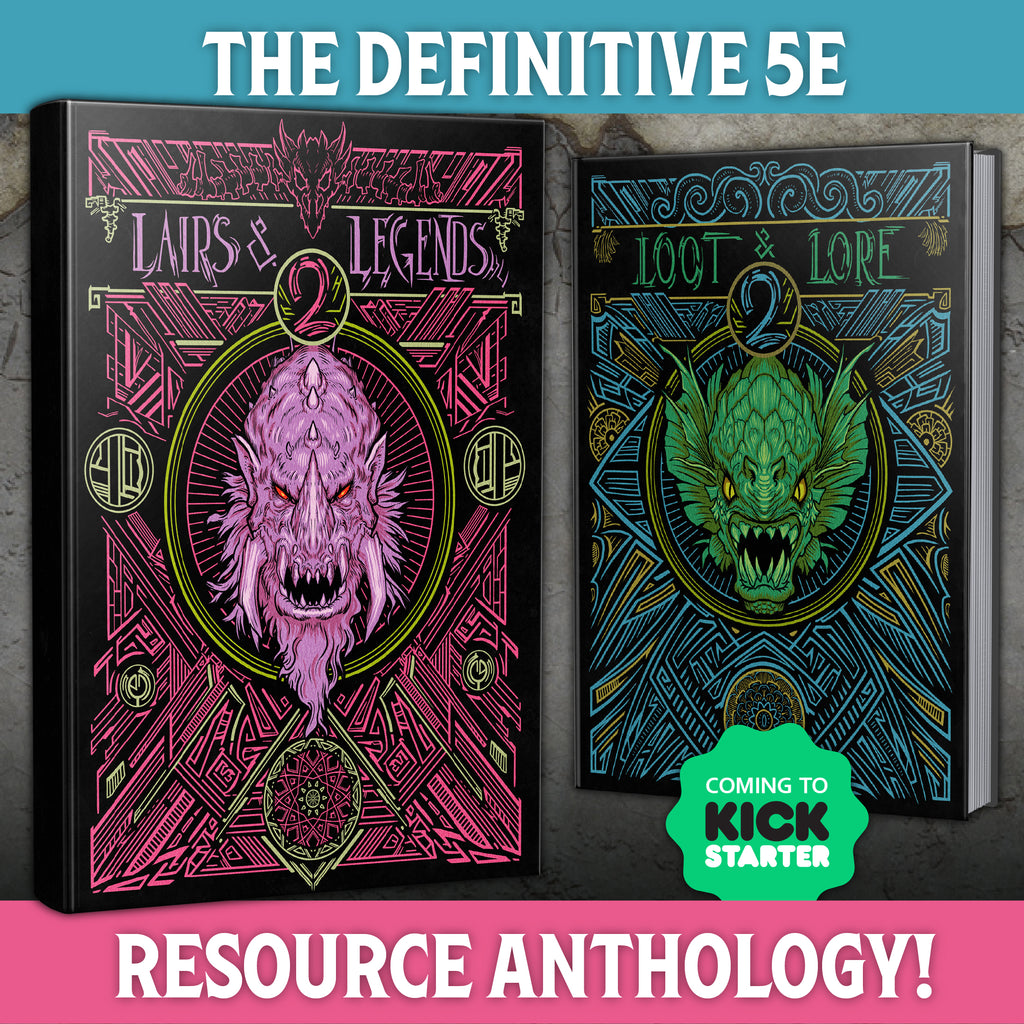3 Ways to Use Character Backstories in D&D

By Luke Hart
Do some quick searches on YouTube or Google, and do you know what you’ll find? Loads of articles and videos explaining how to create character backstories. But do you know what you won’t find? Articles and videos discuss how dungeon masters can use those same backstories.
You see, it doesn’t matter how awesome your players’ backstories are; if you, as the DM, don’t know how to use them in your games, they are de facto worthless. And, of course, it’s about more than just knowing how; you have to actually do it, too. When you do start to use your characters’ backstories in your campaigns, you’ll find yourself with players who are exponentially more invested in your game, care that much more about what’s happening, and ultimately have more fun. This can be immensely satisfying for the dungeon master!
So, let’s talk about how you, as the dungeon master, can use the PC backstories your players have created. This article will be broken into three parts: incorporating backstories into a larger narrative, creating the campaign from character backstories, and empowering players to use their backstories.
By the way, running awesome games with in-depth lore, deadly traps, and terrifying monsters doesn’t have to take hours of prep! Lairs & Legends 2 and Loot & Lore 2 have everything you need! Hand-crafted by a team of professional game masters to make it as easy to use as possible, they are an anthology of game master resources to fuel you for years to come.
Watch or listen to this article by clicking the video below.
Part 1: Incorporating Backstories into a Larger Narrative
There are two basic ways you can use backstories in your games. The first is to incorporate them into a larger narrative. For instance, you may be running an adventure module such as Into the Fey, or you may have your own homebrew campaign centered around a scenario you personally created. Either way, you might still want to incorporate backstories into the game. The second way is to create the campaign from the characters’ backstories themselves, but we’ll hit on that in part 2.
Now, if you are running a pre-made adventure module, using the methods we’re about to discuss may involve making small to medium changes to the module itself. In some cases, they might result in large-scale changes to the module, which may not be desired. However, many times, you’ll be able to just tweak something slightly to make backstories fit in. You’ll just have to evaluate which methods seem best for your game and which ones just aren’t viable.
Of course, if you are creating a homebrew campaign from scratch, you could quite easily incorporate any number of these methods.
1. Use character backstories to create adventure hooks.
As a reminder, a good adventure hook has three elements: One, it clearly describes what must be done and what the goal is. Two, it motivates the characters and/or players. And three, it tells the players how or where to start.
So, when you are using a backstory to inform an adventure hook, you’ll primarily be looking to use an element from the backstory to help motivate at least one of the characters. For instance, if dwarven marauders massacred Timmy the Cleric’s hometown, and the adventure hook involves tracking down a dwarven criminal, chances are Timmy will be immediately interested. If the dwarven criminal is from the same marauding band—even better!
2. Incorporate backstories when developing encounters.
One of my players, Ben, once wrote into his fighter’s backstory that he was responsible for the death of his mentor. Now, I wanted to bring some backstory element from the fighter into the game, so I decided that his mentor, after dying, had come back as a revenant and was tracking him down. So, during one game session, as they were traveling from point A to point B, the group came across the mentor revenant and several other cronies that he had recruited to help him get revenge. That resulted in a cool social interaction and then a combat. After the game session, I remember Ben thanking me for adding the backstory element to the game.
Now, you don’t necessarily have to craft an entire encounter based on a backstory. Instead, you could incorporate the characters’ fears or long-term goals into pre-made encounters. You take an encounter that already exists in the module, or an encounter you already created, and you tweak it just a bit to fit in an element from a backstory. This allows you to simultaneously follow the campaign scenario while using backstories.
3. Incorporate “conflict elements” from backstories.
A good backstory usually has the seeds of conflict woven throughout. Timmy the Cleric probably has enemies from his past, unsolved mysteries, or even friends and family who have fallen. These are all “conflict elements”—things you can tie into your campaign’s central tension and conflict. For instance, some of Timmy’s childhood rivals may have grown up to become minions of the Big Bad. Or that strange portal Timmy once saw but didn’t have the courage to explore could end up being central to the Big Bad’s scheme. When you spot those conflict elements in a backstory, grab them and leverage them in your campaign to create tension and drama.
4. Use NPCs from character backstories to bring in familiar faces.
You could use the tried and true method of having NPCs from backstories be quest-givers. Or you could create a need for a specific skill set—say, advanced religious lore—that only Timmy the Cleric’s mentor, Alexis, can help with. You could also put those NPCs in danger: the cathedral is under attack by demons, and Alexis and the other priests are in peril. Or you could create an NPC that reminds the character of someone they once knew. Alexis is dead, but this Samantha sure does look like her; could she be her sister? There are several ways to use NPCs from backstories; you just need to think of and implement them.
5. Give characters a chance to explore their personal objectives.
Many backstories will describe the character as having personal desires and goals. For instance, Timmy the Cleric has been looking for the traveling friar who brought him to the faith for decades. Someday, he hopes to dedicate himself more fully to the task. Why couldn’t that day be today, in your campaign? Now, this could be something that involves downtime activities in between the standard adventures, or it could be full-blown adventures that the character—and the rest of the party, of course—goes on. I mention the rest of the party because, remember, you’re probably running a group game, and having everyone else just watch for an extended period of time probably won’t be super fun for them.
Just remember to create obstacles between the characters and their personal objectives. Creating tension and drama and conflict are the backbone of being a game master, and that doesn’t change now. And to make it more natural to justify the entire group needing to go along on the adventure, why couldn’t that obstacle be so large that Timmy the Cleric has no hope of overcoming it on his own? No, he’ll need his fellow adventurers, of course.
6. Create entire adventures based on backstory elements.
One my players, Trevor, once had a paladin, Dalinor, who was once a member of a thieves’ guild and—if I remember correctly—had a romantic interest in the guild that he was forced to leave behind. So, what did I do? I put his would-be girlfriend in danger, naturally, and then Dalinor and the rest of the group had to go up against this thieves’ guild and a band of demons they had allied with.
To create an adventure based on a backstory element, all you do is find something the character cares about and then create a problem or conflict around it. Then, make it of a large enough scale that it requires a full-length adventure to resolve—not just a quick encounter or social interaction.
7. Incorporate a “secret history” into gaps in the backstories.
Remember, once a character’s backstory passes into your hands as the game master, you can take some liberty with it as long as you aren’t crossing any lines—which should be established between you and the player. A secret history is something in the character’s past that is not in the backstory that you add. Ideally, you’ll do this in a “gap” in the backstory and in a way that feels natural and potentially explains other backstory elements.
Once you’ve decided what this secret history is, your next step is to make it come alive at the game table. It could be an encounter, and adventure, or any other number of methods we’ve discussed.
8. Take the characters back to emotionally charged places from their past.
The group now needs to travel to the monastery where Timmy the Cleric performed his undergraduate work. The only thing is that Timmy carries a bit of emotional baggage—trauma, let’s call it trauma—from his time there; the monks were brutal taskmasters, and Timmy nearly flunked out. It’s the last place he wants to go. Or, Timmy and company might need to travel to the ruins of Timmy’s hometown, only to find that dwarves have established a colony there.
9. Challenge characters’ preconceived ideas and biases.
Timmy has always hated dwarves, but what happens when a group of dwarves saves the group when they get lost in the Underdark? Will Timmy change his views a bit, or will he assume they have ulterior motives?
10. Remember to use every character’s backstory!
This should go without saying, but make sure you’re not neglecting certain backstories. Give everyone some time in the limelight—unless you have some players that NEVER created backstories. In that case, that’s their own darn fault!
Part 2: Creating the Campaign from Character Backstories
Instead of working backstories into a campaign, you can base the entire campaign on character backstories. Now, this can be challenging and does not work with pre-written campaigns, but it can be incredibly rewarding for players.
This method first requires that all players submit backstories, of course, but you also need to ensure that the backstory contains the information you’ll need to craft a campaign from them. For the most part, if your players follow the free backstory template available on thedmlair.com—which I also discuss in my recent video on creating character backstories—you should mostly have what you need. However, you may also want to ask them your own custom questions to help guide their backstory creations.
You’ll want to have your players create their backstories plenty of time before the campaign begins because you’ll need to use the backstories to create the campaign! A good time to do this is when the current campaign is beginning to wind down, there are only a few more adventures left, and the players know a new campaign is coming soon.
Then, as the game master, you do not want to plan out the core of the campaign until you have your players’ backstories in hand. You might plan some basic elements, such as location and some very early adventures, but I recommend avoiding even that.
Once you have your players’ backstories, you want to farm them for mysteries and conflicts, both ones you asked for, ones the backstory template prompted them for, and ones the players added themselves. Your goal will be to tie as many of the backstories together as possible into one cohesive campaign. You are not just having separate adventures drawn from each character’s backstory; no, you want them all to tie together in the main scenario, plot, or Big Bad of the entire campaign.
This method makes the entire campaign incredibly personal and almost guarantees player investment. If you do this, you could possibly have the best campaign you’ve all ever played.
Now, the pitfall, the danger, to this approach is that you end up with a campaign that relies on all characters surviving to the end, which de facto means you must give them plot armor or risk the campaign falling apart. So, you need to craft the campaign in such a way that it doesn’t require the characters to survive. The characters that started the campaign may have been the impetus to the plot, but that doesn’t mean other characters can’t pick up any fallen torches.
Part 3: Empowering Players to Use Their Backstories
It should not be the sole responsibility of the game master to incorporate character backstories into the game. Players need to pitch in as well!
First, players should be familiar with their backstories so that they recognize when backstory elements are being brought into the game and can roleplay their characters accordingly. After all, that’s part of the purpose of a backstory: for it to inform the player’s roleplaying of their character. By the way, few things smart more than when a GM painstakingly incorporates a backstory element only to have the player not recognize it.
Next, players should actively try to use their backstories during gameplay. For instance, Timmy the Cleric might enter a tavern and ask if there are any dwarves present because, you know, Timmy doesn’t exactly like dwarves! This gives the game master the opportunity to say “yes” and enables the character to roleplay out the situation, perhaps introducing some good old conflict—and perhaps a bar fight. Or a character who grew up in poverty might occasionally haggle with shopkeepers to drive the price down, even though they may now be swimming in gold.
Now, as the game master, you should let your players know that this sort of backstory inclusion is not only okay but encouraged. It may seem obvious to us that players can and should be doing this, but never assume. It only takes a moment to clarify this point, and it can result in some amazing game moments.
It's Time for New Legends!
Running awesome games with in-depth lore, deadly traps, and terrifying monsters doesn’t have to take hours of prep! Lairs & Legends 2 and Loot & Lore 2 have everything you need to cut your prep time in half while preserving your campaign and your story! These two massive tomes are designed to let you plug-and-play encounters, monsters, magic items, brain-burning puzzles, and more easily into your game!
Or you’ve just needed that one really cool thing for your game, but it’s just not coming to you?
Both books contain hundreds of pages of 5e game master resources, carefully crafted by a team of expert game masters to be both exciting to run and easy to use. You don’t need to parse through dense paragraphs trying to find something useful; just take a quick glance through it and you’ll have everything you need at your fingertips.
Never again feel like you’re stuck with the chore of prep so you can finally run your game: get Lairs & Legends 2 today.
Get Access to 1000s of Free 5e Resources!
Now, if you're on a budget, we totally understand. That's why we also offer loads of free 5e resources for folks. Just sign up for the DM Lair Newsletter to instantly get access to our entire library of free 5e resources. We'll also send you new resources every week!
-
Posted in
Game Master How-To Articles







